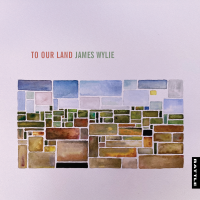Home » History of Jazz Timeline: 1960
History of Jazz Timeline: 1960
Ornette Coleman records This Is Our Music in August. This album features
Ornette on alto sax, Don Cherry on pocket trumpet, Charlie Haden on bass and Ed
Blackwell on drums, and is available on Atlantic LP.
The Black rights movement is currently in full swing. Left wing thought is taking hold.
Free Jazz and Black rights become intertwined.
Ideas of the soon to arrive "hippie" or "hippy" culture are brewing. People should be free to
"do their own thing."
Free Jazz and Modal Jazz are pushing Bop forms aside.
In Free Jazz, it is as if the musicians have blown apart the older forms (New Orleans, Swing and Bop) and represented them in a form that is musically analogous to the Abstract Art of Jackson Pollock.
Bop is becoming passe. In fact, Dixieland players at this point may be producing more interesting music because the Dixieland form is more varied than Hard Bop. The mainstream of Jazz (New Orleans > Swing > Bop) is drying up.
The heyday of Soul Jazz (a popular form of Hard Bop) is beginning.
Miles Davis records Sketches of Spain with the help of Gil Evans.
Ornette Coleman finishes The Shape Of Jazz To Come in July after starting it in
October of 1959. The album features Ornette on alto sax, Don Cherry on pocket trumpet,
Charlie Haden on bass and Billy Higgins on drums, and can be found on Atlantic CD.
Ornette releases the anthem LP Free Jazz in December. This album can be found on Atlantic CD. The players include Ornette on alto sax, Don Cherry on pocket trumpet, Freddie Hubbard on trumpet, Eric Dolphy on bass clarinet, Charlie Haden and Scott LaFaro on bass and Ed Blackwell and Billy Higgins on drums. The original album cover featured an appropriate Jackson Pollock painting. This was one of the most important albums in the Free Jazz movement.
Charles Mingus leads a quartet with Eric Dolphy, Ted Curson and Dannie Richmond.
Charles Mingus in a 1960 interview comments regarding Ornette Coleman. "Now aside
from the fact that I doubt he can even play a C scale...in tune, the fact remains that his
notes and lines are so fresh. So when Symphony Sid played his record, it made everything
else he played, sound terrible. I'm not saying everybody's going to have to play like
Coleman. But they're going to have to stop playing Bird." (Quote is from "Another View of
Coleman," Downbeat 27:11 (26 May 1960): 21 - I saw it in the Rosenthal book, page 152 -
see bibliography)
Over six days in October, Coltrane records material for three albums. The first one released, My Favorite Things, features his recorded debut on the soprano saxophone. "My Favorite Things," a highly modal piece, will become a Jazz favorite. Coltrane's quartet on this date includes pianist McCoy Tyner, bassist Steve Davis, and drummer Elvin Jones.
Two other albums recorded by Coltrane during these marathon October sessions were Coltrane's Sound and Coltrane Plays The Blues.
Coltrane's The Avant-Garde, which delves into Free Jazz, was also released during 1960.
Coltrane also becomes interested in and influenced by Ornette Coleman. He records
Coleman's "The Invisible."
Archie Shepp records for the first time on The World of Cecil Taylor.
Pianist Barry Harris moves to New York City. Barry records Barry Harris at the Jazz Workshop with Sam Jones and Louis Hayes.
Trumpeter Freddie Hubbard's first Blue Note LP Open Sesame includes tenorist Tina Brooks.
Tenor saxophonist Wayne Shorter joins Art Blakey's Jazz Messengers.
At what is first scheduled to be just another "blowing date," tenor saxophonist Hank
Mobley records the classic Soul Jazz album Soul Station. The rhythm section
includes Art Blakey, Wynton Kelly and Paul Chambers. How could you go wrong with these
four first-rate musicians?
Pianist Bobby Timmons records his debut album This Here Is. It includes his most popular originals This Here, Moanin' and Dat Dere.
Lalo Schifrin joins Dizzy Gillespie's band as a pianist, but more importantly as an arranger and composer. See the Verve CD Gillespiana.
Poll results printed in Leonard Feather's Encyclopedia of Jazz list Duke Ellington, Louis Armstrong, Charlie Parker, Lester Young and Count Basie as top Jazz figures in that order. This points out the lag between fan and musician appeal.
Sister Rosetta Tharpe becomes very popular in Europe.
Ray Charles does Georgia On My Mind.
In Liverpool, John Lennon, Paul McCartney, George Harrison and Pete Best name their group The Silver Beatles.
Keyword Search
Disclaimer: Though we have checked our facts, this timeline may contain erroneous information. If you discover errors or omissions, please bring them to our attention.









